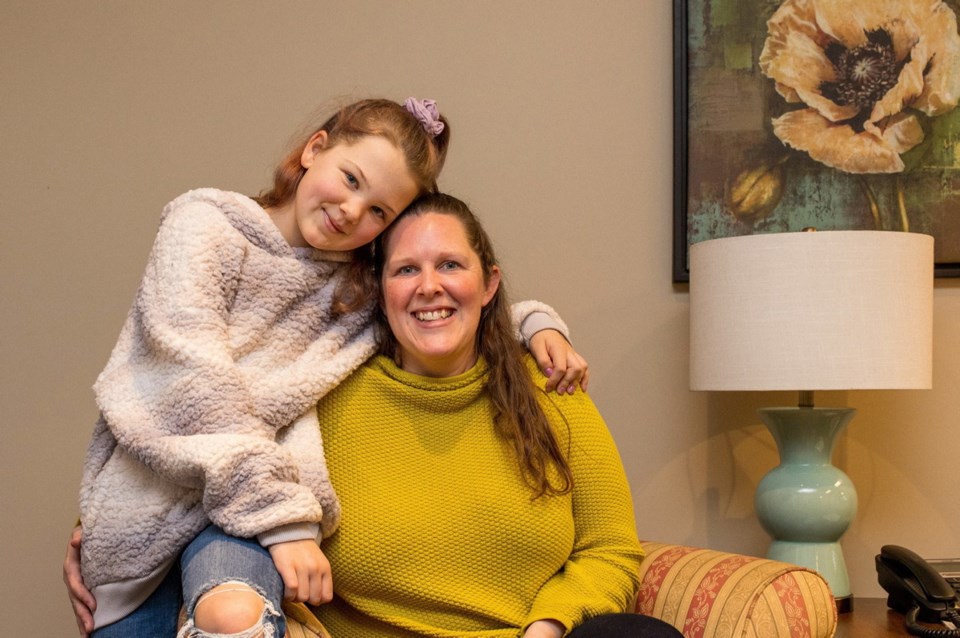It’s tough being 12 when you can’t eat what you want.
But Makenna Tayler makes the most of it as she deals with a condition called eosinophilic esophagitis, which one of her doctors has abbreviated to EoE.
EoE is a chronic immune disease that can lead to allergic reactions often triggered by specific food. The reactions cause a type of white blood cell to build up in the esophagus, where they inflame or injure tissue.
Makenna’s problems turned out to be linked to a severe dairy allergy. Her mom, Lissa Tayler, said it wasn’t long before she realized dairy products are in a wide variety of everyday food items — even candy and chips.
“It’s things that you wouldn’t even expect,” Lissa said. “You’re just constantly having to check labels.”
Lissa said she thinks Makenna’s situation can make her feel isolated at times. “Being the same as your peers and being able to do what they do is so important at this age,” Lissa said.
Makenna called going into a bakery “torturous,” and said birthday parties are bad, too. “When you go into the grocery store, walking past cheese bread or cakes sucks.”
Makenna’s stomach problems began when she was three — she remembers having stomach aches as a youngster that caused a sharp pain “like being stabbed.”
It took some time to determine what the problem was, Lissa said. “Without the referrals, Dr. Allen Hayashi and his team, or the video gastroscope, we’d still be wondering what was wrong,” she said
Hayashi does minimally invasive endoscopic surgeries for both adults and children at Victoria General Hospital, and made the diagnosis on Makenna.
The video gastroscope, a device with a camera on the end of thin, flexible tube, was inserted through Makenna’s mouth, allowing Hayashi to examine her esophagus, stomach, small intestine and colon.
“We wouldn’t have answers without the gastroscope,” Lissa said. “He’s a life-saver.”
She said Makenna consumed a fair amount of dairy before the diagnosis was made, so it was a relief to find out what was happening.
Makenna realizes how important the procedure was for her. “If it wasn’t for the scope, my throat would probably be closed up by now,” she said.
“And we still wouldn’t know what was going on.”
Lissa said getting the diagnosis when she did was vital for Makenna, since if the condition is left untreated, ridges can form in the esophagus that make it impossible to swallow. “So someone might need a feeding tube because they can’t swallow food. Thanks to Dr. Hayashi, we never got to that point.”
Of more than 33,000 surgeries performed each year at Victoria General and Jubilee hospitals, almost every one requires some form of imaging technology before, during or after the fact.
As for Makenna, she is doing well and lives an active life with activities such as dance, soccer, basketball and gymnastics, and also likes to hike and go to the beach. She is off to Japan this month on a trip with her middle school.
By talking about the procedure, Makenna and Lissa hope to bring attention to efforts to fund a new video gastroscope as part of the Victoria Hospitals Foundation’s Big Picture Campaign.
The video gastroscope now in use is shared between pediatric and adult surgery.
“Sometimes, we want to use the equipment and we can’t,” Hayashi said. “When it’s in use, in need of repair, or being cleaned, a child will need to wait.”
A new gastroscope, which will also have advanced technology, would end that problem, and its higher-quality images would allow doctors to examine areas of concern in real time, improving diagnosis and treatment of a range of conditions, Hayashi said.
“The new video gastroscope has far better resolution and accuracy. It’s revolutionary.”
HOW TO DONATE
Donations to the Big Picture Campaign can be made by:
• Going to victoriahf.ca/bigpicture
• Calling 250-519-1750
• Mailing a cheque to Wilson Block, 1952 Bay St., Victoria, B.C., V8R 1J8



